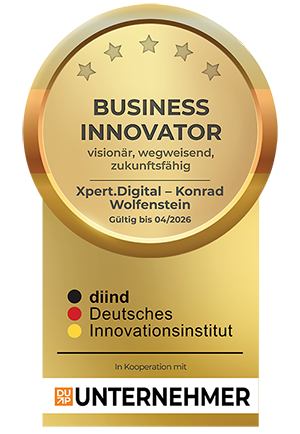Published on: November 19, 2024 / Update from: November 19, 2024 - Author: Konrad Wolfenstein

For B2B / SMEs: What advantages does Google Discover and Google News offer compared to social media? – Image: Xpert.Digital
Social Media vs. Google Discover: Finding the optimal B2B strategy
Finding the right marketing mix: Strategic decision support: Social Media or/and Google Discover for B2B?
Deciding between social media and Google News/Google Discover for B2B marketing depends heavily on your goals, audience, and resources. Both approaches have advantages and disadvantages. Let's strategically analyze the two options:
Option 1: Social media – reach and community building
Advantages:
- High reach: Platforms like LinkedIn, Twitter (now X), and even niche platforms offer access to millions of potential B2B contacts.
- Targeted approach: Social media ads enable precise targeting by industry, job title, company size, etc.
- Interactive communication: Direct engagement with customers, dialogue instead of monologue.
- Brand awareness: Social media helps establish your brand in your niche.
- Data-driven insights: Get detailed analytics to optimize campaigns.
Disadvantages:
- High competition: Social media is crowded, making it harder to stand out.
- Cost-intensive: Good content requires resources (content creation, community management, advertising budget).
- Dependence on algorithms: Reach is often unpredictable and dependent on platform updates.
Option 2: Google News/Google Discover – Hidden champion for traffic and visibility
Advantages:
- Less competition: Since many companies don't actively use Google News/Discover, you have a strategic advantage.
- High visibility among target groups: Content is curated and displayed in a targeted manner - often to decision-makers who are looking for current industry trends.
- Organic reach: One-off technical effort (e.g. structured data) can deliver free traffic in the long term.
- Authority through content: High-quality articles in Google News increase the credibility of your company.
- Opening up new touchpoints: Many users consume content via Discover and News without actively searching for information - you can “pick it up” there.
Disadvantages:
- Technical barrier: You need in-depth knowledge of SEO, structured data and Google News/Discover requirements.
- No direct engagement options: Unlike social media, Google News/Discover does not offer any interactive features.
- Dependence on content quality: You depend on excellent content - mediocre content is not shown.
Strategic consideration: When is which option better?
1. Social media is better when:
- You want to generate targeted leads (e.g. LinkedIn Ads - however, experience shows that the conversion rate to a qualified lead is low ).
- You want to establish yourself as a brand in a competitive industry.
- Your target group is active on social media (e.g. HR, IT decision-makers).
- You want to use interactive features such as comments, groups or events.
2. Google News/Discover is better if:
- You want to show thought leadership and expertise.
- The focus is on organic reach (rather than paid ads).
- Your target audience often reads industry-specific news.
- You want to use an “underrated” marketing tool that remains stable in the long term.
Recommendation: Combined strategy
- Start on Google News/Discover: Initially invest in technical implementation and create high-quality, SEO-optimized content. This brings you visibility and traffic from an underrated source.
- Use social media for distribution: Share this content on social media to create synergies. This allows you to reach both the masses (social media) and specialized interested parties (Google News/Discover).
Example of practical implementation:
1. Google News/Discover:
- Set up structured data.
- Write high-quality articles, white papers or studies on a regular basis.
- optimize for keywords that are relevant to your niche.
2. Social Media:
- Promote your content through LinkedIn posts and groups.
- Use targeted ads to promote your items to relevant audiences.
Would you like more details on the technical implementation for Google Discover/News or tips on optimizing your social media strategy? 🚀
More about it here:
Suitable for:

